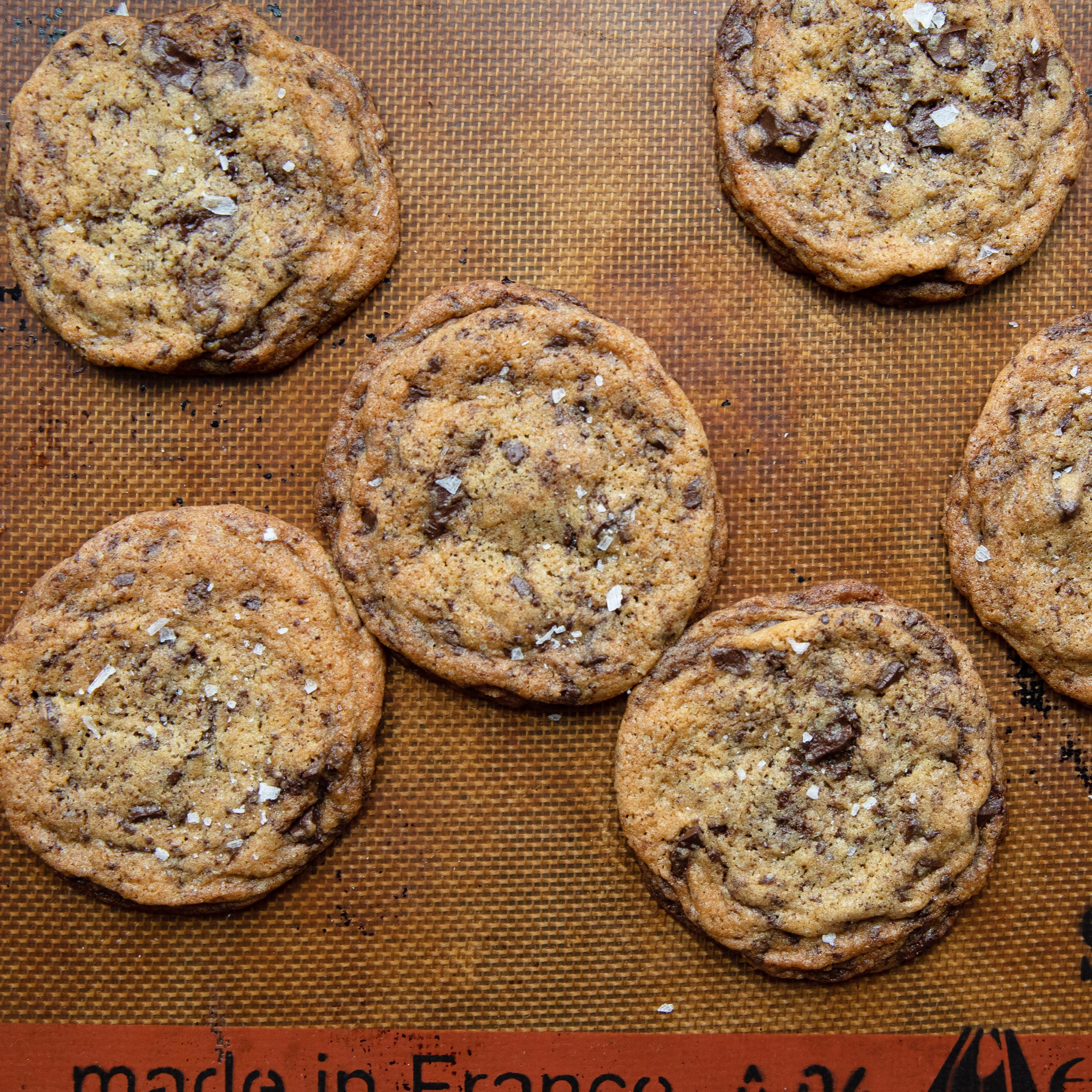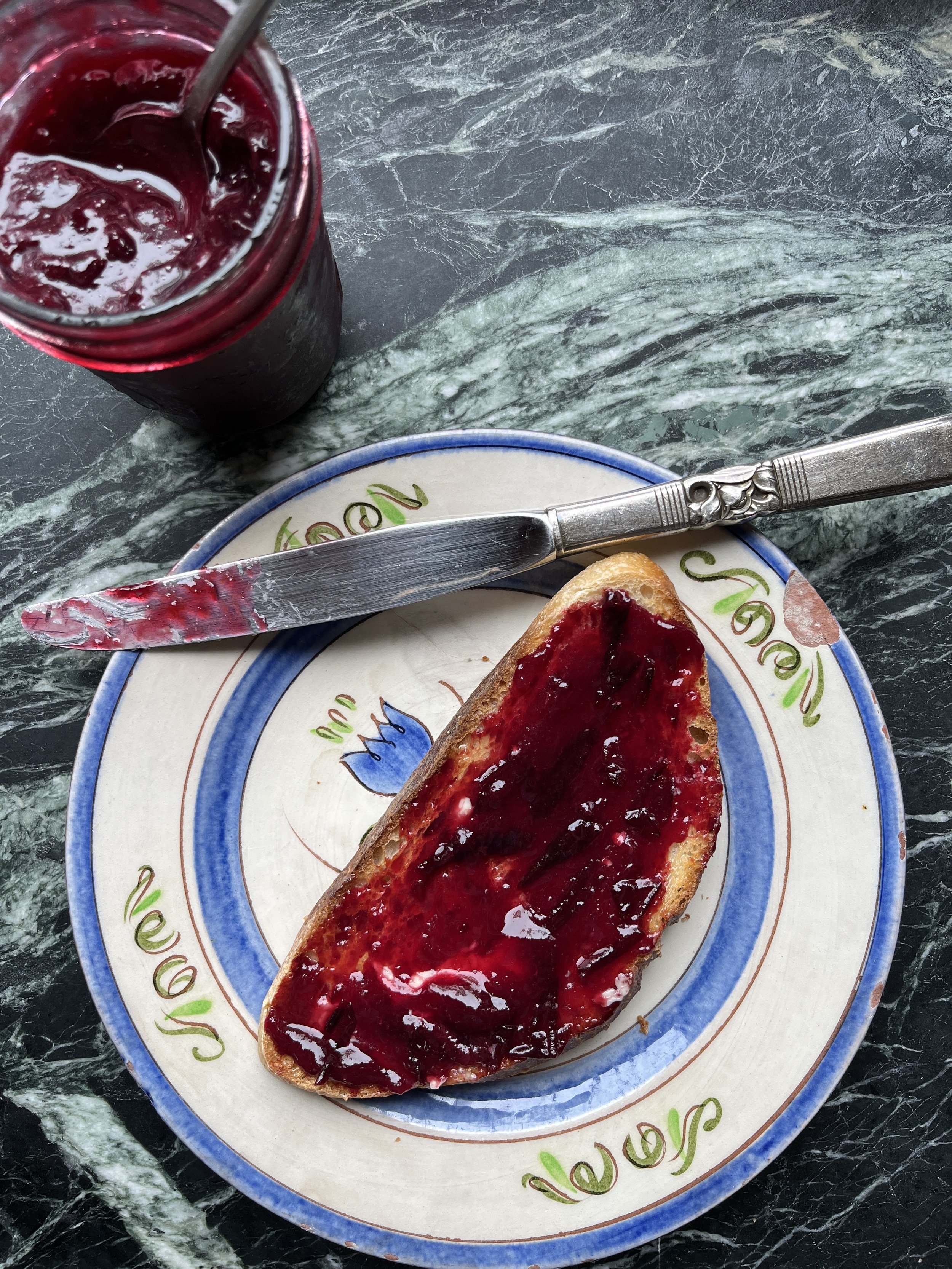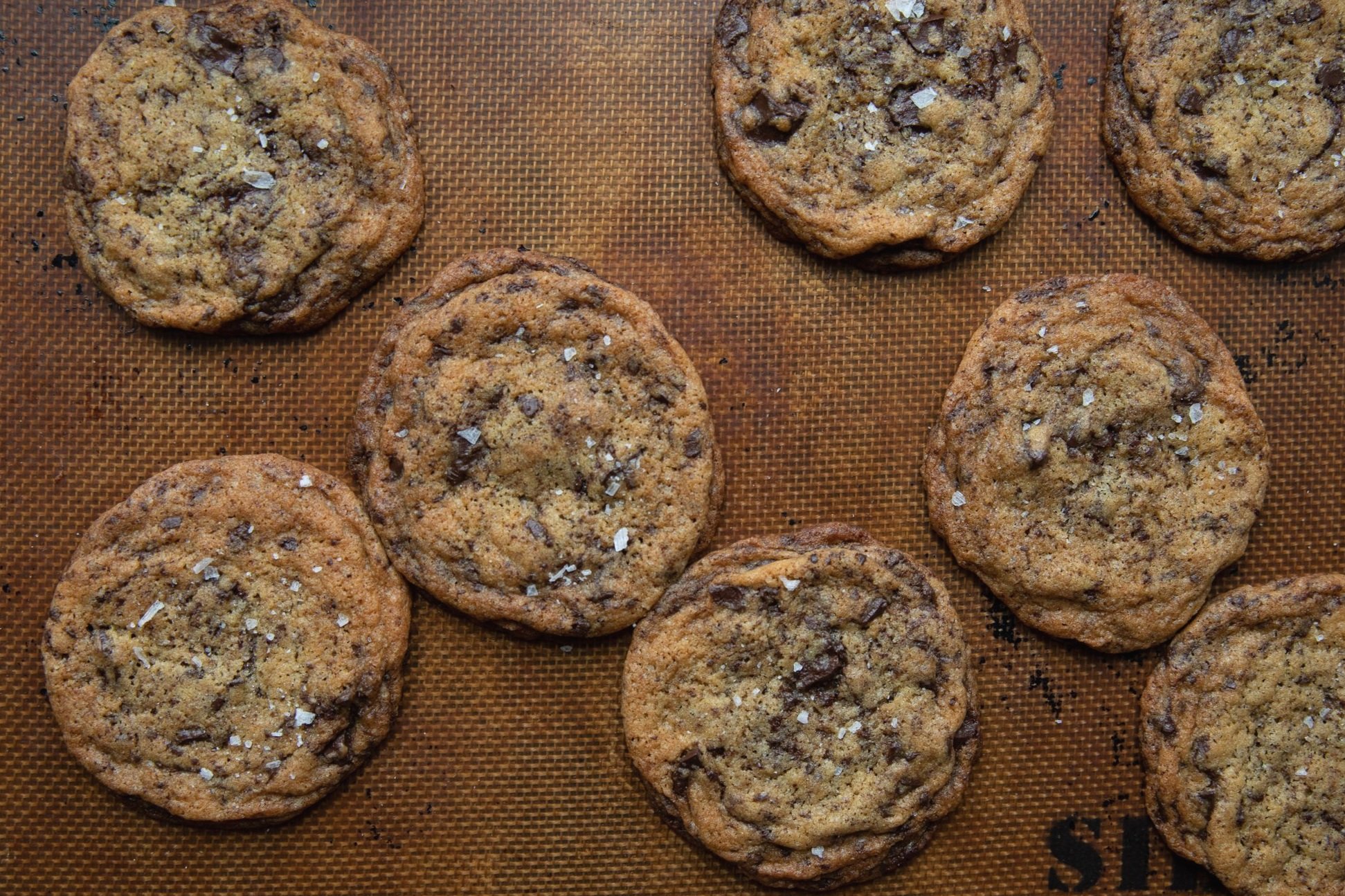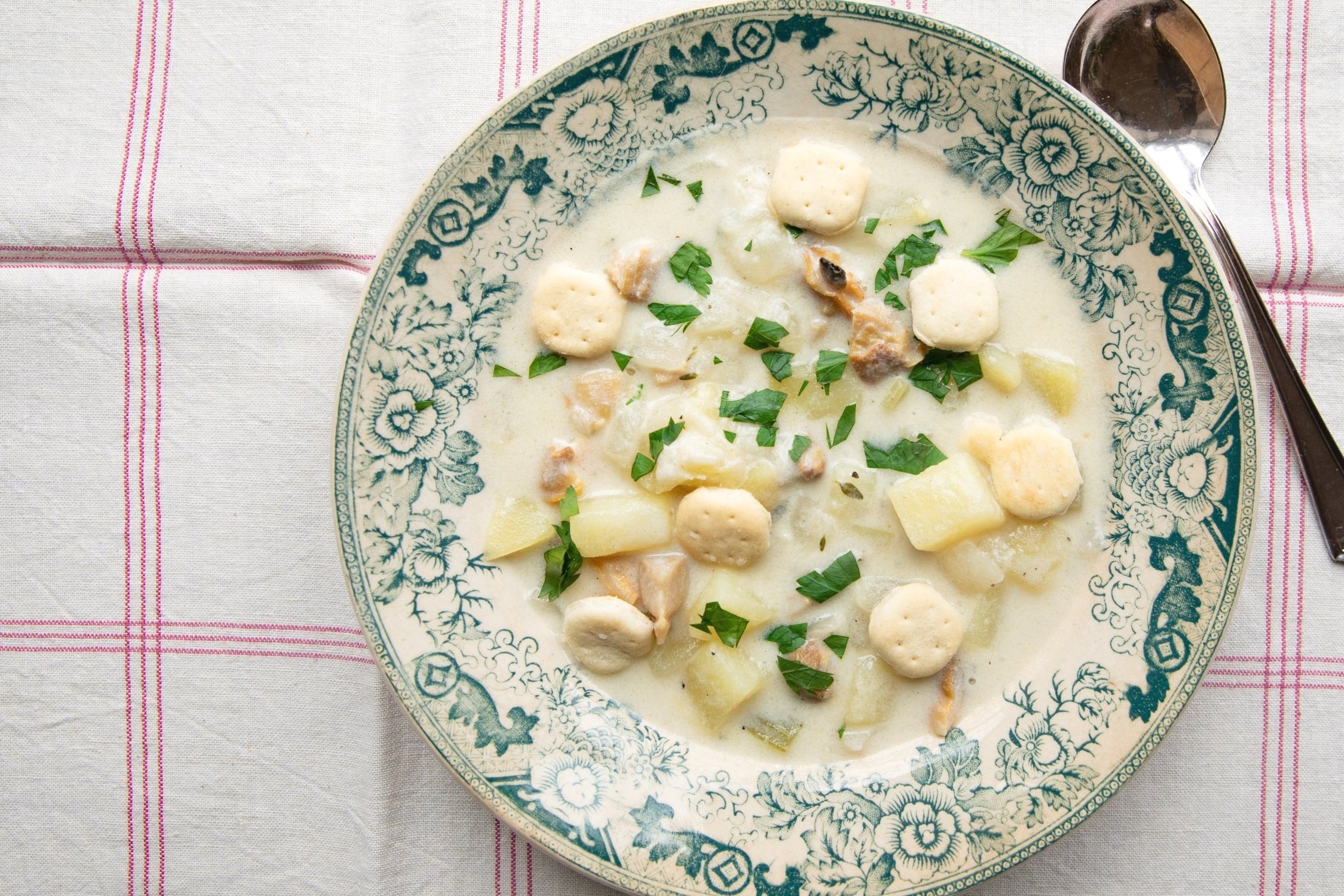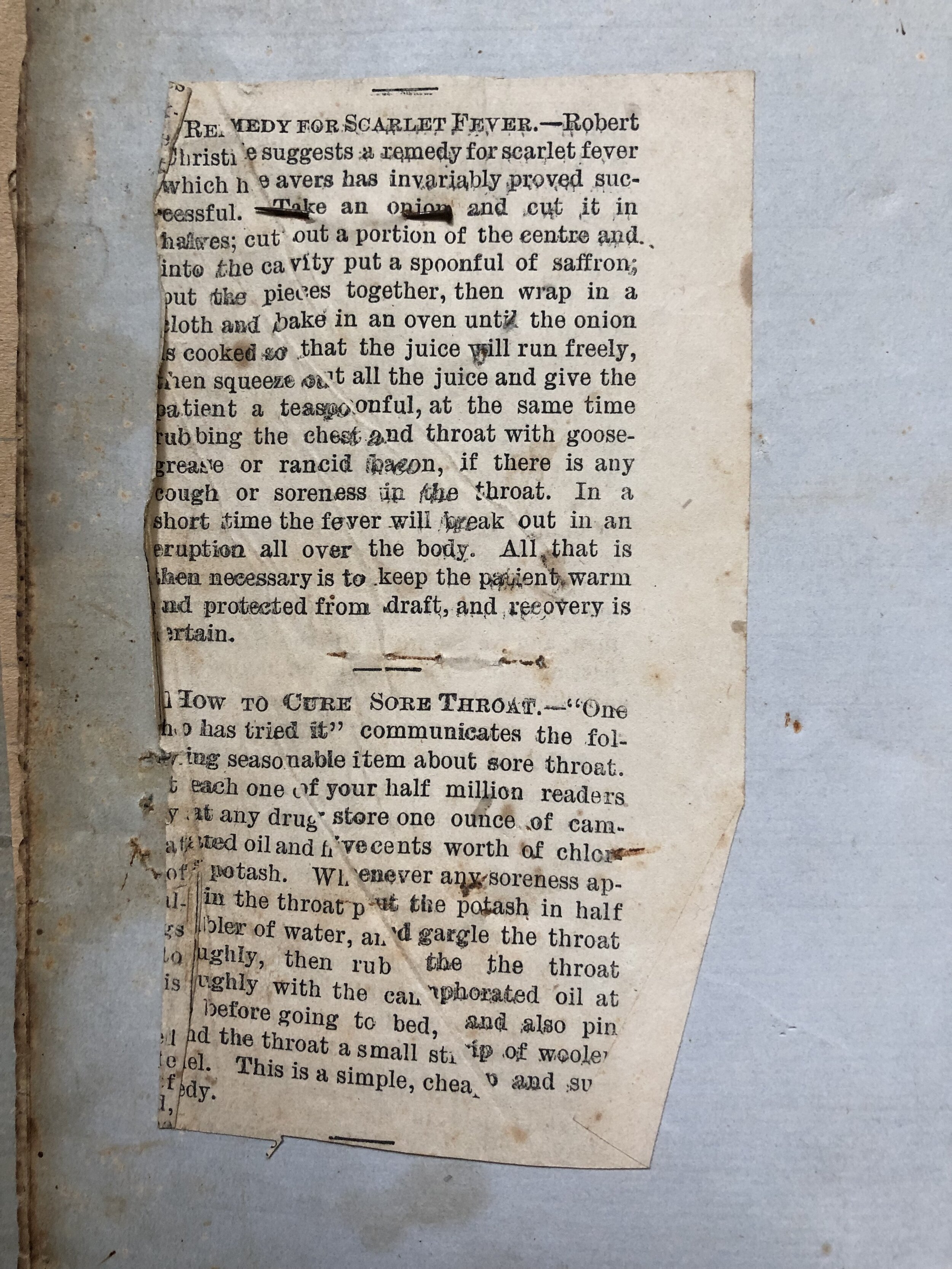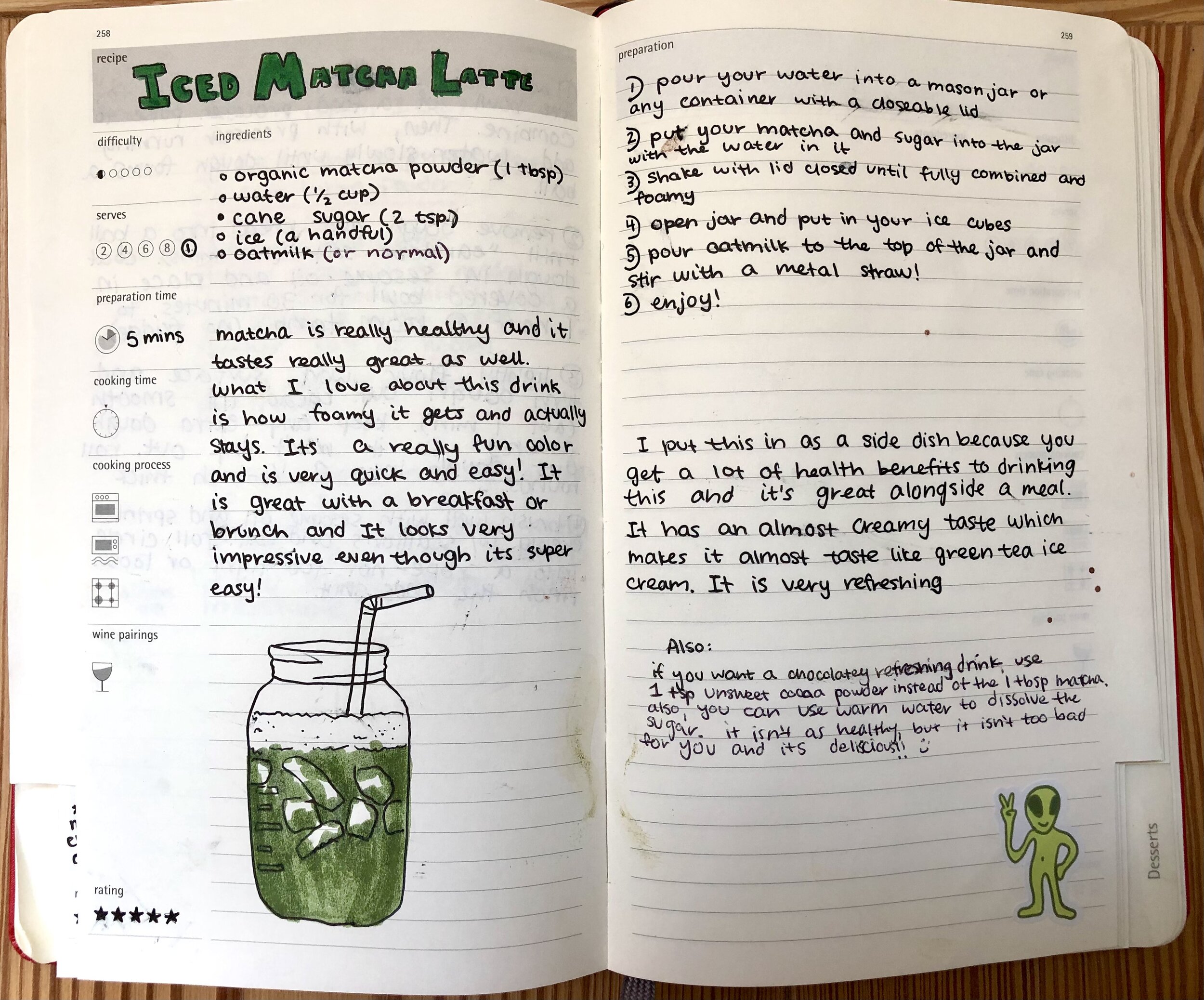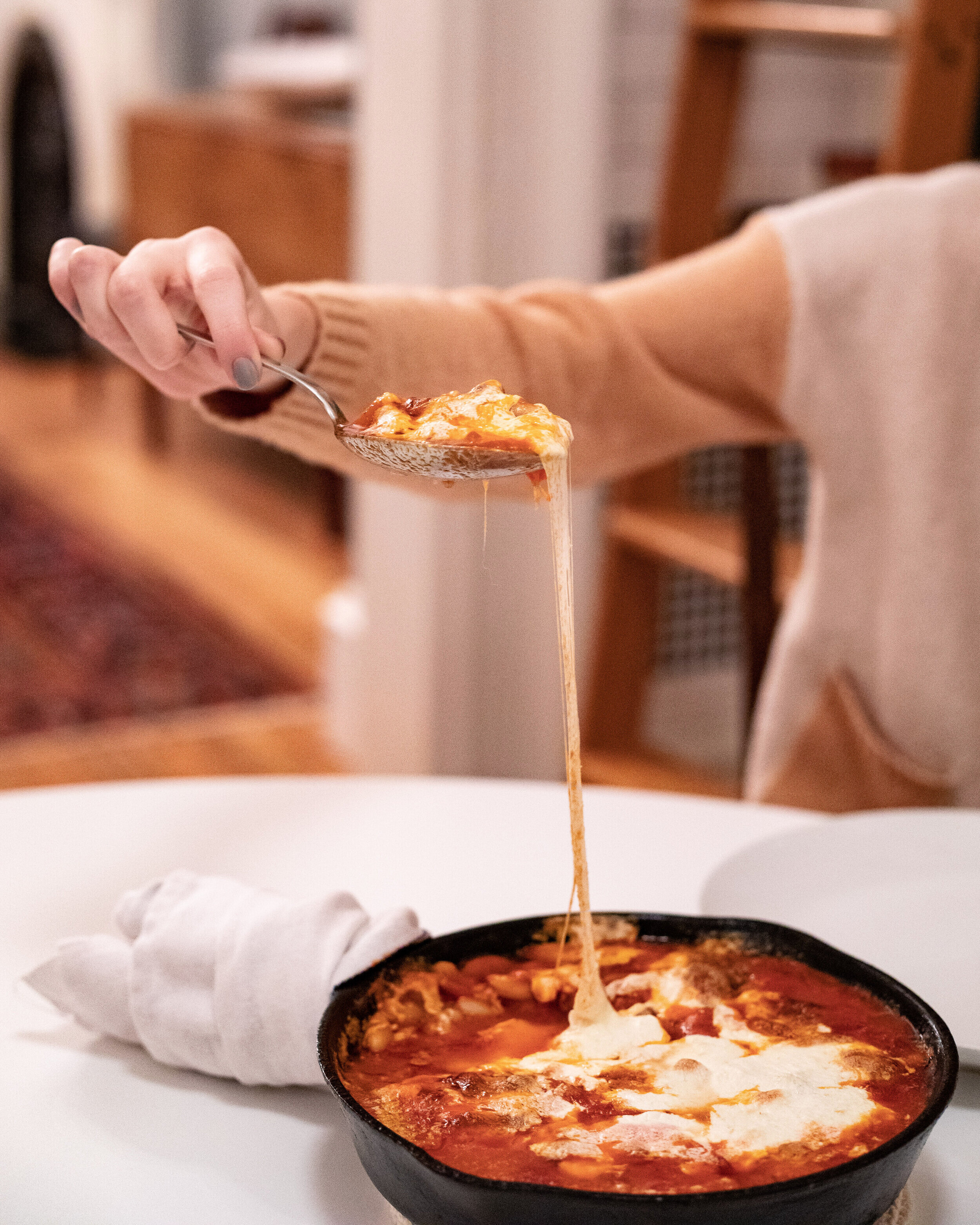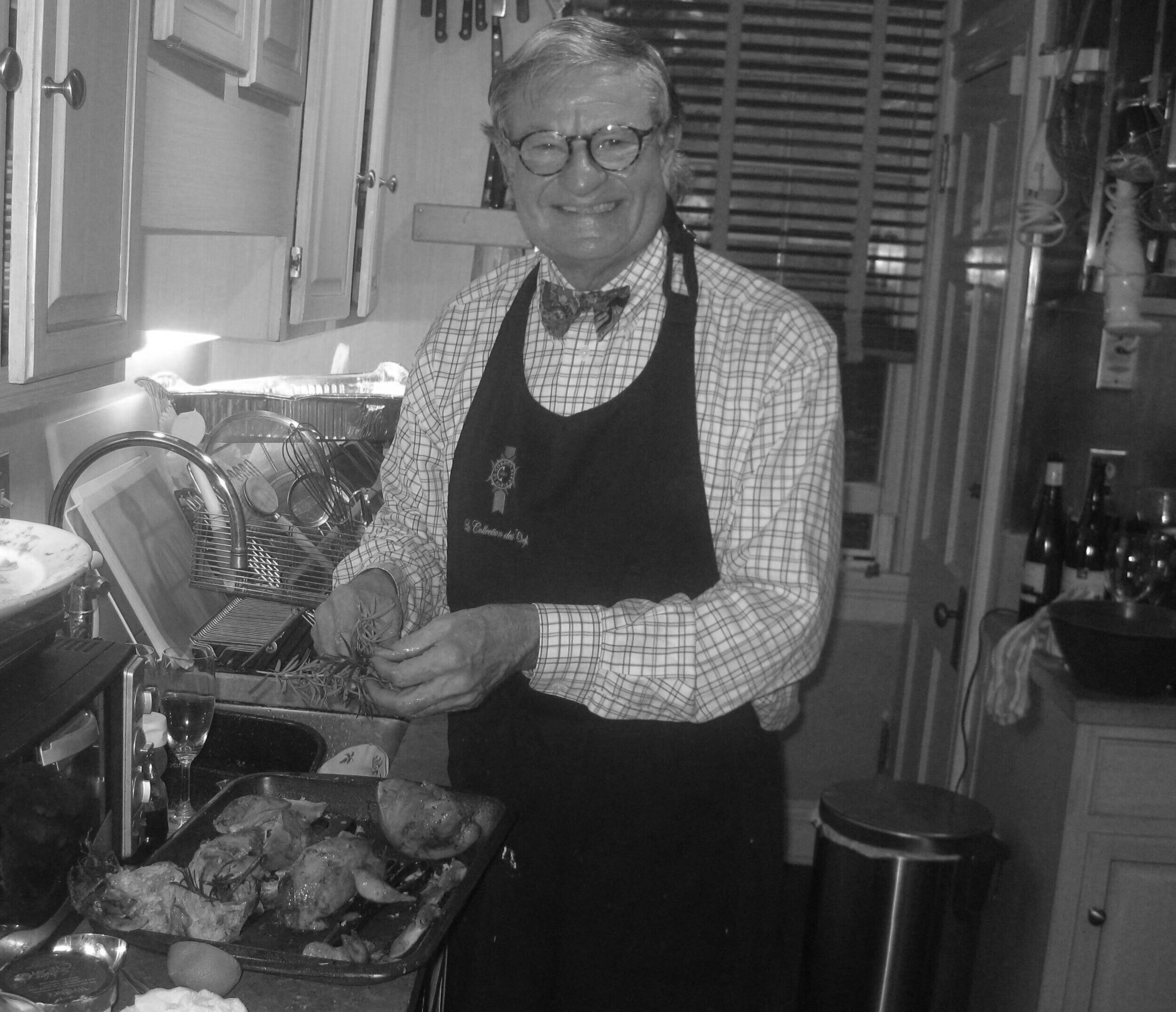The star of my childhood Christmases was a ham I refused to eat. I’m not talking about the honey-baked variety or the pineapple-and-maraschino studded roasts that beckon from soft-focus holiday ads. Not that there’s anything wrong with those, they’re just not real hams. They’re not Virginia hams—a regional specialty that people who have lived in certain parts of the state know well.
The ham I speak of is a country ham that has undergone a months-long curing and smoking process and, if done properly, is a smoky, nutty, salty delicacy that gets sliced paper thin and practically melts on the tongue. In my opinion—and my opinion is not unique—the best way to enjoy it is to bake heaps of small buttermilk biscuits, cut them in half crossways, spread each side thick with butter, then lay either a thin slice or minced shards of ham in between the biscuit halves, and make yourself a delightful little sandwich. Or two. Or five dozen.
This type of ham is a form of charcuterie dating back to 17th century Virginia, when English newcomers found that hogs thrived in the pine and poplar forests where they could shelter from the summer sun and fatten themselves on acorns in the fall. Later, Virginia pigs enjoyed a diet of peanuts long before they became a popular American snack (tangent: peanuts are native to South America but zigzagged across the globe and reached North America via slave ships from Africa—as did many of the finest “Southern” ingredients). In the Virginia Tidewater, country ham quickly became a staple not only because of its deliciousness, but because pigs were plentiful, and curing and smoking the well-padded hind legs was a way to preserve the meat year-round. Similarly iconic hams from Parma, Italy and Serrano, Spain are close cousins, though they bear the distinctive marks of regional terroir and technique.
When I was growing up, Virginia country hams were commonly referred to as Smithfield hams, after the town near the Chesapeake Bay that was long the epicenter of ham production in Virginia. Unfortunately, the megacorporation that now bears that name was purchased by overseas investors and became infamous for environmental and safety issues. The best hams now come from family producers that have stayed small and adhered to traditional techniques. Edwards makes a very fine ham, as does Nancy “The Ham Lady” Newsom in Kentucky (yes, neighboring states make wonderful country hams, as well).
My father worshiped at the altar of the Virginia ham and mail-ordered one every year, several months in advance of Christmas. It would arrive at our home in Alexandria in a handsome cloth sack, artisanally mummified, its skin stretched taut and maroonish. But because Dad always had to take things a step further, he would embark on an additional ripening period himself. In our basement.
A quick side tour of this basement, which even now, years after my father’s passing, remains a strange, chaotic shrine to him. The house is old, and its sublevel was always meant to be an unfinished space that is home to the furnace and washing machine and other mechanics. The concrete floor becomes a riverbed every time it rains, and there’s no stopping it, so you just go with it and step over the waters. The ceiling was once crisscrossed with a network of asbestos-lined pipes, but when in the 80’s the city of Alexandria mandated expensive remediation, Dad donned an N95 mask and ripped out the friable asbestos casings with his own hands (no he was not a professional contractor—he was an ad man).
Apart from the nuts and bolts of the basement, it has a back room that was and still is a cabinet of curiosities of all things Dad: gym, art studio, wine cellar, time capsule. The first thing you see is a weight machine and a treadmill, on which he used to take leisurely strolls while watching 60 Minutes and sipping a glass of wine, a pair of beat-up leather topsiders on his feet. Staring out from behind the workout equipment is a ginormous, 80’s era photograph of himself that was presented upon his retirement; it still makes me jump every time I walk in there. Opposite the workout equipment is an analog TV propped up on a long, paint splattered workbench strewn with crusty brushes and tubes of paint, canvases and colonial-era nails and leaking cans of mineral spirits.
But of all the rare and imperfect gems that basement holds, its crown jewel is the wine cellar: a space of barely 50 square feet that contains multitudes. Wine was one of Dad’s many hobbies, and soon after we moved into the house he enclosed the back quadrant with drywall to create a hermetically sealed, climate controlled chamber lined with wooden racks, laid with threadbare oriental rugs, and lit with a brass chandelier. A deep and mysterious recess in the rear brick wall—one of those quirks of old houses—was put into service as “The Port Hole” and stored bottles of vintage port for friends. At one point, while browsing in a French flea market, Dad stumbled upon what just might have been the original lock to the Bastille—a baronial oak and iron contraption with a key the size of fireplace poker. He bought it for nothing, lugged the hefty rig home in his suitcase, and mounted it onto the cellar’s aluminum Home Depot entry door, which he painted a high-gloss crimson. He built the room 100% by himself, and it was his man cave extraordinaire. Over the years he collected wine and oenological paraphernalia: antique corkscrews and silver wine tasters, decanters and framed posters from his friend Mark’s wine bar, Willi’s, in Paris. Wooden wine crates piled up outside the door like cubist snowdrifts and no doubt made a cozy nesting spot for several generations of mice. For additional ambience he wired speakers down there that usually blasted classical music but which in August of 1997, while I happened to be visiting, delivered the unforgettable news that Princess Diana had been killed.
From the ceiling near the Port Hole hung an ancient iron “S” with a wicked sharp point; this was the ham hook. The wine cellar apparently provided the ideal environment for a ham to age, and so it did, each year for several months. As it mellowed, it lazily dripped an oily, iridescent fluid onto the floor, adding to the general patina of the room. And whatever mass the ham lost in moisture it more than replaced in mold. A marbled moldscape of fuzzy white, blue, and green grew on the exterior, cloaking the ham thickly. Sometimes, while hosting playdates, I would lead an unsuspecting friend down for a tour of the musty and mood-lit basement: through clanking pipes, past retired Halloween props and the realistic rubber rat that Mom placed among wine racks for kicks, and ending with a flourish at the ghoulish ham swaying on its hook. No one ever believed me that it was destined to be consumed.
But consumed it was, every December, after an intense soaking and scrubbing in the slop sink of our laundry room. I can’t vouch that any part of the process, or in fact anything about the basement, would pass health inspection, but after a day or two the ham would ascend spotless into the kitchen above after going a few rounds with a wire brush.
The ham cleaned up pretty nicely, and after more soaking, boiling, and a final baking, it was ready for showtime at our Christmas day open house, sliced with a surgically sharp carving knife on a silver platter with a host of flaky biscuits waiting to envelope it. I never could bring myself to eat any, as its sordid basement past was burned in my mind’s eye. I hung back slyly as the grownups clustered around the sideboard, cramming ham slices into biscuits, loading up plates of seconds, washing it all down with wine as they chatted and laughed excitedly. I thought to myself as I watched them: “Oh, you have noooo idea.”
But it was I who had no idea. No idea that some of the best things are touched and shaped by time and mold and rot. That while the grownups really were digging the ham, they were mostly in it for the company. I got it years later, when removed from Virginia and—maybe sentimental, maybe curious—began incorporating ham biscuits into my own family’s Christmas tradition. At first, I bought it sliced to order from the excellent and sorely missed Stinky cheese shop, where you could get different kinds of ham carved by the pound. Later, I started mail-ordering entire hams that were larger than any of my babies at birth (which is saying something). We had to have a few people over to help eat the ham, and those few people became more, and the vibe really got quite merry because the thing about eating salty ham is that it makes you thirsty, and then you drink whatever is in your hand to slake the thirst, then eat more ham, refill the glass, and so on. Our friend Tim coined the term for what happens the next day: a Hamover.
A few years ago, I think it was the year Dad died, we reluctantly let this tradition slide because, honestly, it just felt too overwhelming; quiet and order were the balm that was needed in the holiday leadup. We stopped ordering a whole ham because there would be no one to help us eat it, and our home was empty of the familiar briny, primal scent of the ham soaking and simmering on the stove: a smell, it took me many years to realize, I had always connected with the holidays. This year, in our small merry pod, we will probably make a batch of sausage rolls: a tradition from my husband, Ben’s English family. They’re a delicious substitute, but they’re not quite the same.
It’s common to talk about 2020 in terms of things we’ve lost, and it’s true we’ve lost so much—some of it irreplaceable. But I also like to remind myself of what we have gained, and for me it’s a deepened appreciation for those things that were so easy to take for granted before: hugging our parents, laughing around a close table, seeing each other’s smiles, having enough people over to make nice work of a Virginia ham until all that remains is the hock and the promise of a big batch of smoky split pea soup on new year’s day. May 2021 be the year we can enjoy those things once again with renewed gratitude. May 2021 bring the Hamover back.
















